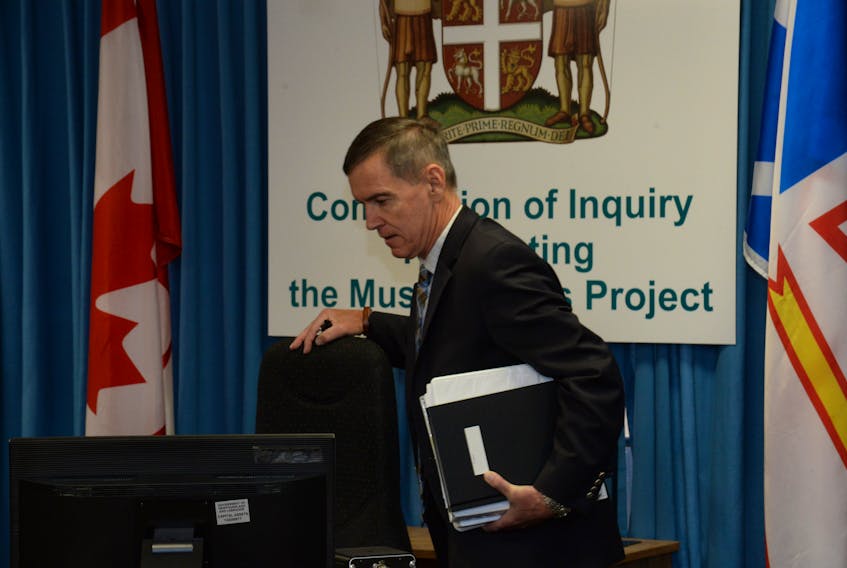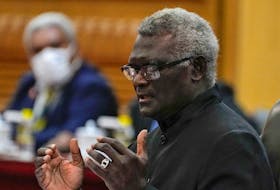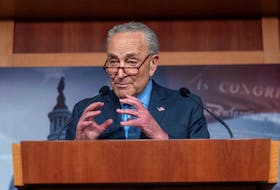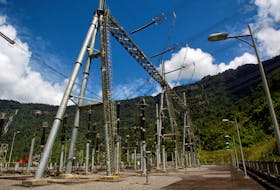ST. JOHN'S, N.L. — There’s really too much to say here about the Muskrat Falls Project, but a few things clearly need to be said.
The Muskrat Falls Project was a failure. That seems the right place to start.
Whatever may come, the present we have is not the future we were promised, not by a long shot (beginning at the nearly $4-billion capital cost overrun). That matters.
Many people will view it differently as time passes, but there is no denying where we are right now: the construction ran off the rails, and it’s amounted to nothing short of a present-day financial disaster we will plead and scrape to recover from. For individual households, the damage is still being determined, largely by the federal government’s decisions ahead.
It’s worth saying the time to review details of a proposed project like Muskrat Falls is a luxury, unless you’re getting paid for it. We hire public servants for a reason (pay premiums to executive level and project leaders), vote for a reason, subscribe to media outlets for a reason. There is some onus on citizens for engagement, but on the level of that engagement: it’s reasonable not to expect a teacher in Corner Brook, an accountant in Marystown and boat tour operator in Twillingate to have read every document or even the overarching Joint Review Panel report from the Muskrat Falls Project’s environmental assessment. It’s reasonable to expect the premier to have read that report (although we now know she didn’t).

There are a lot of details about the project we know because of the Muskrat Falls Inquiry. For one, former Nalcor president and CEO Ed Martin said he believed the cost overruns on Muskrat Falls could be no more than $500 million. He said as much to then-Premier Kathy Dunderdale. The reasonableness of that belief is something left, for now, to Inquiry Commissioner Richard LeBlanc.
“There was no independent risk assessment done, but we thought there was,” said former Finance Minister Tom Marshall, while questioned on his understanding of the potential cost.
In 2012, it was a $6.2-billion energy project (capital cost). It is now at $10.1-billion in capital cost, $12.7-billion in total. At least some of the jump is from risks identified becoming reality, while some cost is from “unknown unknowns,” with no money in the budget to cover. It’s all overrun.
In the Energy Corporation Act (the legislation creating and governing Nalcor Energy), there are sections demonstrating the desire of government to not have a situation where the Crown corporation was entering into financial arrangements that would require money from the provincial coffers, without the elected government’s understanding and say so. There are requirements for the Cabinet (in some cases Finance minister, if designated) to sign off on all forms of borrowing down to the interest rates, terms and conditions. Loans were capped at $600 million.
After the Muskrat Falls Project was sanctioned in 2012, in addition to changes in legislation that locked in local ratepayers to shouldering the project long-term, the government lifted the cap, allowing $5 billion in borrowing for Muskrat Falls and set itself up to cover the rest.
“The plain effect of this amendment was to bestow Nalcor with an arm’s-length ability to evaluate, enter into, and bear the consequences of contracts specifically relevant to the Muskrat Falls Project. Nalcor was expressly given additional latitude to take steps to move the project ahead,” Martin’s lawyer Harold Smith described, in final submission to the inquiry.
“In practical terms, when Nalcor went to the market and sought bids on its proposed scope of work, and bids were received, there was expressly no formal obligation on Nalcor to bring the resultant contracts to Government of Newfoundland and Labrador for review or approval, by legislative design,” he said. That’s even as overruns fell to ratepayers and the province.
“It was open to (the government) to design the legislation such that Nalcor would be required at particular intervals; based on a particular magnitude of contract; or other criteria, to seek and obtain the approval of the Lieutenant-Governor in Council [the Cabinet] in respect of its contracting activities. No such mandate was imposed. Mr. Martin’s practice of providing (the government) with high-level updates with respect to contracts; risk assessments; scheduling details; and so on (…) was fully in keeping with the legislative mandate communicated to Nalcor from the Government of Newfoundland and Labrador.”
It is ludicrous Finance Minister Tom Marshall and the provincial Cabinet as a whole were unaware contracts were in over budget, contingency was tapped and financial arrangements were being pressed forward at financial close, in November 2013, based on a $6.5-billion capital cost. That’s $300 million more than sanctioned, less than a year earlier.
The risk to the provincial treasury and risk to solely Nalcor are two different things. And, by the evidence at the inquiry, the government was absent an elected member with deep understanding of the numbers and hand on the tiller. And the public had no knowledge or say in what was going on.
"...by the evidence at the inquiry, the government was absent an elected member with deep understanding of the numbers and hand on the tiller. And the public had no knowledge or say in what was going on."
In Marshall’s case, there was a request to staff for an update on specifics before financial close. A response was issued, but out of date within days, known ahead of time it would be out of date, with Marshall not updated further before close.
Marshall wasn’t the only “minister responsible” disconnected from the reality of what was happening as it happened. In January 2014, for example, a press release was written wherein Minister Derrick Dalley “clarifies information about capital cost,” insisting it was $6.2 billion, when it was $6.5-billion and set to climb higher.
Many of the questions from lawyers at the inquiry circled around what the minister would have thought, or how he would have responded, if he had known what was happening, but the question for the public is why he didn’t know.
The ministers were aware — or should have been aware — of things they could have been asking for along the way to help their understanding, because members of the public were asking for them. There’s the Independent Engineer’s report Dalley had not sought before financial close. It was months before financial close when The Telegram went asking after the same engineer’s reports.

The Independent Engineer was referred to by the provincial government early on (including on the floor of the legislature in 2013) as part of the province’s layers of oversight. However, elected officials put no questions to the Independent Engineer before financial close. The Independent Engineer also reported to the Government of Canada, with no commitments to the province at the time.
However well-intentioned the efforts, the board members of Nalcor Energy described themselves as overworked and in need of project-specific expertise. The oversight committee of government had no independent members when it was first formed and it began by hiring a consultant to advise on how to approach the oversight work.
Construction ticked on, and the public inquiry recorded a long list of issues arising at the construction sites, moving them from rumor or limited report to confirmed record. Just one example is workers at the main dam site grabbing windshield scrapers from pick-up trucks on site, to begin cleaning and preparing rock face for further construction, as the proper tools weren’t available to them.
Some difficulties reported are wrapped up in ongoing disputes between the Crown corporation and contractors, or between contractors and subcontractors. That includes the arbitration involving Nalcor and main contractor Astaldi Canada.
The inquiry has revealed more of the complicated relationship between Nalcor and Astaldi, between the province and Astaldi, including the decision to stick with Astaldi on the dam build, given a consultant’s suggestion a change-out could further cost the project. But when workers started to go unpaid in 2018 and began publicly condemning the state of affairs, Astaldi was kicked off the dam site anyway.
There were specific claims about contractors put to the Commission, with requests for anonymity, suggesting everything from theft of materials to inappropriate billing to non-arm’s length contracting. There were no smoking guns found, credit given to Nalcor’s internal audit team, with a few files that had already been flagged by internal auditors and dealt with. For example, one employee fired after a close review of filed work hours.
The inquiry work is not without its limits. The commercial disputes will go beyond the Commissioner’s final report, the project’s not yet generating power, the Labrador-Island Link is not fully functional and efforts towards rate mitigation have a long way to go, in a separate review by the Public Utilities Board. The inquiry was also a provincial animal, and did not look far into the role of the federal government or financial institutions.
At the same time, there are lessons emerging and surely policy and legislative changes ahead.
The final report will be something worth placing in the hands of every provincial politician and Crown corporation board member, as they take their oaths and make their first promises.
Twitter: @TeleFitz
MUSKRAT FALLS INQUIRY COVERAGE BY ASHLEY FITZPATRICK








